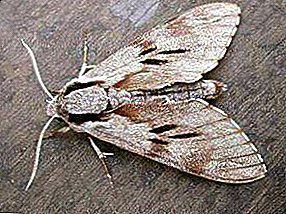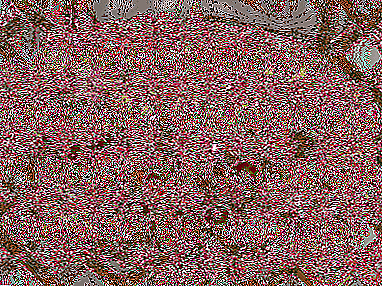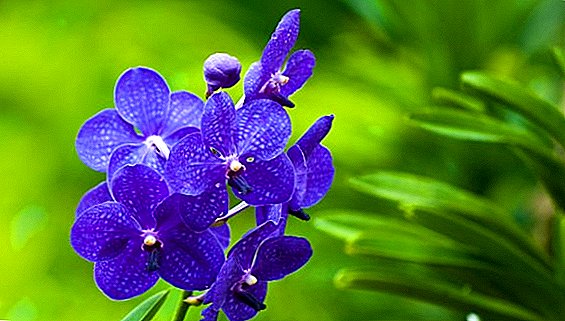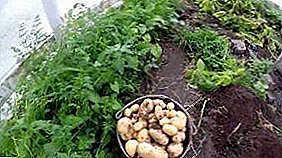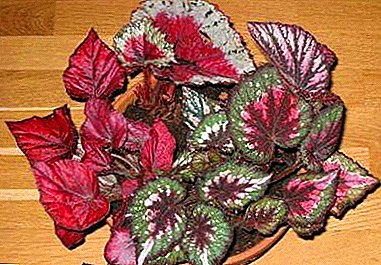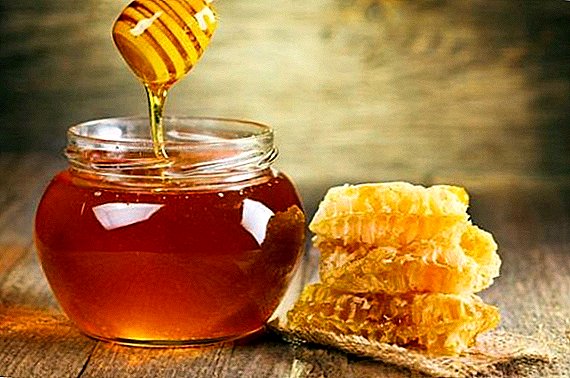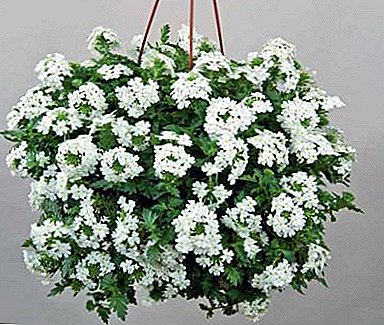
Verbena - is an ornamental plant, which today flaunts on the beds of many gardeners. Its uniqueness in a wide range of colors and species.
Among all the diversity of this decorative culture, verpelle ampelous remains especially popular. She will be able to give a bright and long-term flowering subject to the simple rules of farming. In our article we will consider the peculiarities of ampelous vervain.
What is this plant?
This is a perennial plant that is grown in a cold climate, as an annual. The stems of the flower reach 60 cm, so planted this type of vervain in hanging pots or high beds. The plant grows quickly, and the flowers cover 0.5 m2 of the flower. Flowers take a small size and have no flavor. The following colors predominate:
- purple;
- red;
- pink;
- Navy blue;
- white.
Features of the form
The peculiarity of this plant is that it is an excellent feed for butterflies and caterpillars. In addition, the flowers are famous for their healing properties. You can use them for the treatment of boils, scrofula. Also, the plant increases brain activity. Of course, the direct purpose of vervain ampelous decorative. It is installed on the windowsill or planted in a flower bed.
A photo
In this section you can see photos of this plant:




Care
Lighting, air, temperature
Ampel verbena is a thermophilic and light-loving plant. Grow it stands on the site where there is sunlight. Otherwise, the culture will begin to grow up, and flowering will be absent. As for the temperature, the ampelous verbena tolerates drought and cold to -3 degrees.
But moisture affects him destructively. Because of this, a number of diseases can develop that can ruin a flower.
The soil
It is worth growing on loams. Although it does not matter, as the plant does not impose special requirements to the soil. If the soil is too dense and dry, then ordinary sand will help to make it loose. A delay in the moisture in it will allow the mulch in the form of rotted leaves or sawdust.
Watering
To moisturize the soil in which the ampelous verbena grows is moderate, but often. Although the plant tolerates drought well, Do not allow drying of the ground. During the heat it is necessary to increase watering, but to reduce the amount of water used.
Important! Re-wetting is impossible, since it will lead to the development of powdery mildew. It is enough to water the culture 3 times a week.
Top dressing
 If the soil is not fertilized, then before planting verbena it is worth making humus in the amount of 5 kg per 1 m2.
If the soil is not fertilized, then before planting verbena it is worth making humus in the amount of 5 kg per 1 m2.
During the growing season is to make mineral and organic fertilizer. You should not get carried away with fertilizers, because when they are abundant, foliage is actively formed, and the number of buds is reduced.
Organics contribute only 1 time at the stage of bud formation. But mineral supplements should be used 3-4 times per season.
Landing
Since the plant does not tolerate severe frosts, planting seedlings in open ground is only after the weather is warmand the soil warms up carefully. And although the ampelous vervain is undemanding, it feels great in non-acidic earth with excellent drainage.
Planting should take place at a distance of 20-25 cm. Replant along with an earthy clod, as there is a risk of damage to the roots, which are poorly restored when transplanted to another place.
Growing up
Ampel verbena propagated by shoots or cuttings. In the summer gardeners use breeding shoots for this it is necessary to lay a branch of vervain on the ground and tuck earth. A few weeks later the plant can be seated.
Before the first frosts, it is necessary to dig up a bush of a plant together with an earthy clod, transfer it to a closed room. At the same time, the air temperature in the room where the bush will be stored should not exceed +10 degrees. Cutting can be performed in February-March.
Preparatory activities are carried out as follows:
 Cut off the top of the shoot with 4-6 leaves. Wipe the cut with fine coal. On the handle should be present only the top leaves.
Cut off the top of the shoot with 4-6 leaves. Wipe the cut with fine coal. On the handle should be present only the top leaves.- For transplanting will require a special container filled with substrate. It consists of sand and peat, taken in equal amounts.
- In the ground, make a small depression and plant a stem there. Too much to deepen it is not necessary. Just sprinkle with earth to the bottom pair of cut leaves.
- Cover the container with a handle to create a greenhouse effect.
- It is necessary to water the soil moderately to prevent drying and excess water.
- After 30 days, the seedling will form a root system.
Already in May, the soil warms up sufficiently, so you can plant the stems in the ground. During the entire growing season, the soil has to be loosened to prevent the emergence of weeds. If the summer is too hot, then the land can be dried after watering. This will give the root system a "breathe."
Recommendation! Seeds of vervain red ampelous do not propagate.
Diseases and problems
Ampel verbena refers to those plants that do not get sick with proper care. But with excessive soil moisture or too hot weather, powdery mildew can strike the plant. To combat it, Fundazol and Saprol are used. Among the vermin pest ampelous pests affect mites. You can eliminate them with insecticides, which you can buy in a specialty store.
With excessive and frequent irrigation, the culture may be affected:
- rot;
- blackleg;
- spotting
These diseases lead to the death of the flower. Ampel verbena, despite its unpretentiousness, needs full and thorough care. This is the main condition for long flowering plants. In addition, this will prevent the development of various unpleasant situations, which cannot always be eliminated.


 Cut off the top of the shoot with 4-6 leaves. Wipe the cut with fine coal. On the handle should be present only the top leaves.
Cut off the top of the shoot with 4-6 leaves. Wipe the cut with fine coal. On the handle should be present only the top leaves.